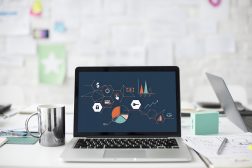Cellular Network Architecture
Cellular network architecture is a fundamental aspect of the infrastructure that enables the implementation of 5G technology. The architecture of cellular networks is evolving to meet the increasing demands of modern communication. In the context of 5G, the architecture is designed to achieve higher data rates, lower latency, increased capacity, and improved reliability.
Unlike the previous generations of cellular networks, 5G introduces a novel architecture that is more flexible and scalable. The key components of the 5G network architecture include:
- Radio Access Network (RAN): The RAN is responsible for connecting user devices to the core network. In 5G, the RAN incorporates new technologies like beamforming and massive MIMO to enhance coverage and capacity. It also supports advanced features such as network slicing and virtualization.
- Core Network: The core network is the central part of the cellular network architecture, responsible for the overall management and control of the network. In 5G, the core network is designed to be highly flexible and software-driven, enabling efficient handling of diverse traffic types and supporting various services and applications.
- Network Functions: Within the core network, various network functions are distributed. These functions include session management, mobility management, and security functions, among others. In 5G, network functions are virtualized and can be dynamically scaled and deployed based on demand.
- Edge Computing: With the advent of 5G, there is a growing emphasis on edge computing, which involves processing data closer to the end user, at the network edge. Edge computing reduces latency and enables real-time processing, paving the way for new applications and services.
The 5G network architecture provides a highly flexible and scalable framework that supports a wide range of applications and services. It enables seamless connectivity, enhanced data rates, improved quality of service, and efficient resource utilization. With the evolution of cellular network architecture, 5G technology is set to revolutionize the way we communicate, transforming industries and facilitating the growth of the digital economy.
Beamforming
Beamforming is a key technology in 5G that improves network performance and capacity by focusing the transmission and reception of signals in specific directions. Traditionally, in cellular networks, signals are transmitted in all directions, leading to interference and reduced efficiency. Beamforming solves this challenge by steering the signals towards the intended receiver, thereby enhancing the signal quality and reducing interference.
There are two types of beamforming techniques used in 5G:
- Analog Beamforming: In analog beamforming, the signal from multiple antennas is combined to form a single beam that is directed towards the intended receiver. This technique is simpler and more efficient, but it lacks the ability to adapt to changing conditions.
- Digital Beamforming: Digital beamforming, on the other hand, applies complex algorithms to each individual antenna element, allowing for more precise control and adaptability. This technique enables the formation of multiple beams simultaneously, catering to multiple users and optimizing spectrum utilization.
Beamforming offers several advantages in 5G networks:
- Improved Coverage: By focusing the signal in specific directions, beamforming extends the coverage area and enhances the signal strength, especially in dense urban environments where buildings and obstacles can cause signal attenuation.
- Increased Capacity: Beamforming enables the simultaneous transmission of multiple beams, each serving different users or devices. This improves the network’s capacity and allows for better utilization of available spectrum resources.
- Reduced Interference: By directing the beams towards the intended receivers, beamforming minimizes interference from other users or environmental factors, resulting in improved signal quality and overall network performance.
With its ability to enhance coverage, increase capacity, and reduce interference, beamforming plays a crucial role in the success of 5G networks. It enables faster and more reliable data transfer, supports the deployment of new services and applications, and paves the way for the Internet of Things (IoT) and smart city initiatives.
Small Cell Networks
Small cell networks are an integral part of the 5G infrastructure, designed to address the increasing demand for high-speed and reliable connectivity in densely populated areas. Small cells are low-powered wireless access points that supplement the coverage and capacity of traditional macrocell networks. They are typically deployed in areas with high user density, such as urban centers, stadiums, shopping malls, and transportation hubs.
Compared to macrocells, small cells have a smaller coverage area and lower transmission power. This allows for more efficient spectrum utilization, reduced interference, and improved network performance. There are several types of small cells used in 5G networks:
- Picocells: Picocells have a coverage area of a few hundred meters and are commonly deployed indoors, such as in office buildings or shopping centers.
- Femtocells: Femtocells are designed for residential or small office environments. They have a coverage area of about 10 meters and provide high-quality indoor coverage.
- Microcells: Microcells have a coverage area ranging from several hundred meters to a few kilometers. They are deployed in outdoor areas with high user density, such as street corners or outdoor event venues.
Small cell networks offer several advantages in 5G:
- Enhanced Capacity: By deploying small cells, network capacity can be significantly increased, as these cells offload the traffic from the macrocell network. This ensures faster and more reliable connectivity, even in crowded areas.
- Improved Coverage: Small cells provide localized coverage in areas where macrocell signals may be weak or attenuated. This ensures that users can maintain a stable connection and enjoy high-speed data transmission, even in challenging environments.
- Lower Latency: With reduced distances between the user devices and the small cells, latency is minimized, enabling real-time applications and services, such as online gaming, autonomous vehicles, and remote surgery.
- Cost-Effective Deployment: Due to their smaller size and lower power requirements, small cells are more economical to deploy compared to traditional macrocell towers. This allows network operators to extend coverage and capacity cost-effectively.
Small cell networks are a critical component of the 5G ecosystem, enabling enhanced capacity, improved coverage, and lower latency. By leveraging small cells, network operators can meet the ever-increasing demand for high-speed connectivity in urban areas and provide a seamless user experience for a wide range of applications and services.
Massive MIMO
Massive Multiple-Input Multiple-Output (MIMO) is a key technology in 5G networks that revolutionizes the way data is transmitted and received. MIMO refers to the use of multiple antennas at both the transmitter and receiver to improve the overall system performance. Massive MIMO takes this concept to the next level by deploying a significantly larger number of antennas, typically in the order of tens or hundreds, at the base station.
In traditional wireless systems, a single antenna is used at both the transmitter and receiver, limiting the overall capacity and data rates. Massive MIMO, with its increased number of antennas, offers several advantages in 5G networks:
- Increased Capacity: By utilizing a large number of antennas, Massive MIMO significantly increases the system capacity. It enables the simultaneous transmission of multiple data streams to multiple users, maximizing the utilization of available spectrum resources.
- Better Signal Quality: Massive MIMO reduces interference and improves signal quality by employing beamforming techniques. The multiple antennas allow for precise steering of beams towards the intended users, enhancing signal strength and minimizing interference from other users or environmental factors.
- Enhanced Coverage: The use of multiple antennas in Massive MIMO improves coverage, especially in areas with high user density. The system can serve a larger number of users simultaneously and extend the coverage area, ensuring a robust and reliable connection.
- Reduced Power Consumption: Despite the increased number of antennas, Massive MIMO can operate at lower power levels compared to traditional systems. This is because the transmission is focused towards the intended users, reducing wasteful energy consumption and improving network efficiency.
Massive MIMO is at the forefront of the 5G revolution, enabling higher data rates, improved spectral efficiency, and enhanced user experiences. It plays a crucial role in meeting the demands of bandwidth-hungry applications such as 4K video streaming, virtual reality, and augmented reality. With its significant capacity enhancements and advanced beamforming techniques, Massive MIMO is poised to redefine wireless communication and drive the widespread adoption of 5G networks.
Millimeter Waves
Millimeter waves (mmWave) are a key component of 5G technology that enable higher data rates and increased capacity. These waves operate in the frequency range of 30 to 300 GHz, significantly higher than the frequencies used in previous wireless systems. The use of millimeter waves in 5G brings several advantages and challenges.
One of the main advantages of millimeter waves is their large available bandwidth. The high frequencies allow for wider bandwidths, which translates into faster data rates and increased network capacity. With the ability to transmit and receive data at gigabit speeds, millimeter waves are instrumental in supporting bandwidth-intensive applications and services.
However, millimeter waves face challenges related to their shorter wavelength and limited range. Due to their higher frequencies, millimeter waves have limited penetration through obstacles such as buildings and foliage. They are also more susceptible to signal attenuation caused by atmospheric conditions, rain, and even human bodies. These challenges necessitate the use of innovative technologies to overcome the limitations of millimeter waves.
Several techniques are employed to maximize the use of millimeter waves in 5G networks:
- Beamforming: Beamforming is crucial in millimeter wave systems to overcome the limited range and obstacles. By focusing the transmission in specific directions, beamforming improves signal quality and extends coverage.
- Small Cell Networks: Deploying small cells in areas with high user density helps compensate for the limited range of millimeter waves. These small cells can be strategically placed to ensure seamless connectivity and high-performance in urban environments.
- Carrier Aggregation: Carrier aggregation allows for the combination of multiple frequency bands, including millimeter waves, to achieve higher data rates and improved performance. By utilizing different frequency bands, network operators can leverage the advantages of millimeter waves while maintaining coverage with lower frequency bands.
Despite the challenges, millimeter waves offer significant benefits in 5G networks. Their high bandwidth and capacity enable the delivery of ultra-fast speeds, support for bandwidth-intensive applications, and the seamless connectivity of a massive number of devices. With ongoing advancements in technology, the efficient and effective utilization of millimeter waves will continue to drive the evolution of 5G networks and pave the way for the future of wireless communication.
Network Slicing
Network slicing is a revolutionary concept in 5G that allows the creation of virtualized, independent networks within a single physical infrastructure. It enables the segmentation of network resources to cater to the diverse needs of various applications, services, and industries. Network slicing offers several benefits and opens up new possibilities for customization and flexibility in 5G networks.
With network slicing, a single physical network can be divided into multiple virtual slices, each with its own dedicated resources and customized characteristics. These slices are created to serve specific use cases, such as enhanced mobile broadband, massive machine-type communication, and ultra-reliable low-latency communication.
The key advantages of network slicing in 5G networks are as follows:
- Customization: Network slicing allows network operators to tailor the network resources to meet the specific requirements of different applications and services. Each slice can be optimized to deliver the desired performance, quality of service, and reliability.
- Efficient Resource Utilization: By virtualizing the network resources, network slicing optimizes the allocation and utilization of resources. It ensures that each slice receives the necessary capacity and bandwidth, preventing resource contention and maximizing efficiency.
- Isolation and Security: Each network slice operates independently, providing a higher level of isolation and security. This ensures that the performance and security of one slice are not compromised by the activities in other slices, enhancing overall network reliability.
- Support for Diverse Use Cases: Network slicing enables the support of diverse use cases with different service requirements. For example, a network slice can be dedicated to autonomous vehicles, ensuring ultra-low latency and high reliability, while another slice can prioritize high-speed broadband for streaming services.
Network slicing drives innovation and fosters the development of new applications and services. It caters to the specific needs of industries such as healthcare, transportation, manufacturing, and entertainment, facilitating the implementation of Internet of Things (IoT) solutions, smart cities, and Industry 4.0 initiatives.
Overall, network slicing empowers network operators to deliver highly customizable, efficient, and reliable connectivity in 5G networks. It paves the way for a new era of personalized and specialized services, transforming how we connect, communicate, and interact in the digital age.
Cloud RAN
Cloud Radio Access Network (Cloud RAN), also known as Centralized RAN or C-RAN, is an innovative architecture for 5G networks that separates the traditional base station functions into two main components: the Radio Unit (RU) and the Centralized Unit (CU). In Cloud RAN, the CU takes care of the baseband processing and management functions, while the RUs handle the radio transmission and reception.
Cloud RAN offers several advantages in 5G networks:
- Centralized Processing: With Cloud RAN, the baseband processing and resource management functions are consolidated in a centralized unit. This allows for more efficient resource allocation, traffic management, and optimization of the overall network performance.
- Flexible and Scalable: Cloud RAN offers flexibility and scalability by separating base stations from the baseband processing unit. This decoupling allows network operators to easily scale their network by adding or reducing baseband processing resources to meet changing demands.
- Cost and Energy Efficiency: Since the baseband processing functions are centralized, Cloud RAN reduces the need for multiple base station units. This leads to cost savings in terms of equipment and maintenance. Additionally, by consolidating resources, Cloud RAN can significantly reduce power consumption, contributing to a more energy-efficient network.
- Improved Network Performance: With the centralized baseband processing, Cloud RAN enables advanced coordination and interference management techniques. This results in improved network performance, increased spectral efficiency, and better overall user experience.
Cloud RAN architecture also facilitates the adoption of virtualization and software-defined network principles. By virtualizing the baseband functions and utilizing software-defined networking approaches, Cloud RAN enables network operators to deploy services and applications more efficiently, manage network resources dynamically, and support the rapid implementation of new features and functionalities.
Cloud RAN is a key enabler of the future 5G network infrastructure. Its centralized and virtualized architecture optimizes resource utilization, enhances network performance, and provides the flexibility needed to meet the diverse demands of modern communication. With its cost savings, energy efficiency, and improved network capabilities, Cloud RAN will play a pivotal role in the successful deployment and operation of 5G networks worldwide.
Virtualized Network Functions
Virtualized Network Functions (VNFs) are a vital component of the evolving network architecture in 5G. VNFs refer to the virtualization of network functions that traditionally required dedicated hardware appliances, such as firewalls, routers, load balancers, and WAN accelerators. By virtualizing these functions, network operators can deploy and manage them as software instances running on standard servers or in cloud environments.
Virtualization of network functions offers several advantages in 5G networks:
- Flexibility and Scalability: VNFs enable network operators to dynamically scale up or down their network functions based on demand, making it easier to handle varying workloads and adapt to changing traffic patterns. This flexibility allows for efficient resource utilization and cost savings.
- Simplified Infrastructure: By virtualizing network functions, operators can significantly reduce the number of physical appliances required. This simplifies the network infrastructure, saving space, power, and costs associated with hardware procurement and maintenance.
- Rapid Deployment and Service Innovation: With VNFs, network operators can rapidly deploy new services and functionalities by spinning up virtual instances and configuring them according to specific requirements. This enables quicker time-to-market for innovative services and facilitates the development of new revenue streams.
- Improved Network Performance: VNFs allow for greater agility in network management and optimization. Operators can dynamically allocate resources and adjust network functions to maximize performance, enhance service quality, and minimize latency.
The deployment of VNFs in 5G networks aligns with the principles of software-defined networking (SDN) and network functions virtualization (NFV). SDN provides centralized control and programmability of the network, while NFV enables the virtualization of network functions. Together, they offer a flexible and programmable network infrastructure that supports the dynamic requirements of 5G applications and services.
VNFs play a crucial role in the evolution of 5G networks by transforming traditional hardware-based network functions into agile, scalable, and cost-effective software-based solutions. VNFs enable network operators to optimize resource utilization, quickly introduce new services, and deliver enhanced network performance, ultimately providing a more efficient and flexible network infrastructure to support the diverse needs of the 5G era.
Artificial Intelligence and Machine Learning
Artificial Intelligence (AI) and Machine Learning (ML) are revolutionizing the capabilities of 5G networks by enabling intelligent automation, predictive analytics, and advanced decision-making. AI and ML technologies have the potential to transform various aspects of network operations, management, and optimization, leading to improved performance, enhanced efficiency, and enriched user experiences.
In the context of 5G networks, AI and ML techniques are applied in several areas:
- Network Optimization: AI and ML algorithms analyze vast amounts of network data to identify patterns, predict future demand, and optimize network resources and configurations. This proactive approach allows for dynamic network optimization, ensuring optimal performance and resource allocation.
- Intelligent Automation: AI and ML enable the automation of network operations, reducing the need for manual intervention and human error. Intelligent automation streamlines processes such as network planning, provisioning, and troubleshooting, leading to increased efficiency and reduced operational costs.
- Quality of Service Enhancement: AI and ML algorithms can analyze real-time network data to identify and resolve issues that affect quality of service. They can allocate resources dynamically, manage traffic congestion, and optimize routing, ensuring a seamless and consistent user experience.
- Security and Threat Detection: AI and ML techniques have the ability to analyze network traffic and identify anomalies and potential security threats. By analyzing patterns and behaviors, these technologies enhance network security, helping to detect and respond to malicious activities in real-time.
- Customer Experience Improvement: AI and ML algorithms can analyze user behavior, preferences, and usage patterns to deliver personalized and context-aware services. This enhances the customer experience by providing tailored recommendations, personalized content, and optimized service delivery.
The integration of AI and ML technologies in 5G networks empowers operators to deploy self-optimizing networks that continuously learn, adapt, and improve performance based on real-time data and insights. It supports the efficient management of a complex network landscape with a myriad of devices, applications, and services.
As 5G networks continue to evolve, the synergy between AI, ML, and networking technologies will play a critical role in unlocking the full potential of this next-generation technology. AI and ML enable the intelligent management and utilization of network resources, enhance network performance, and drive innovation, ultimately shaping the future of connected services and ushering in new possibilities for industries and society as a whole.
Internet of Things (IoT) Integration
The integration of Internet of Things (IoT) devices and technologies with 5G networks is poised to revolutionize various industries and sectors, enabling a connected and intelligent ecosystem. IoT integration in 5G networks offers several benefits, including improved connectivity, enhanced data exchange, and the ability to support a massive number of devices and sensors.
Here are some key aspects of IoT integration in 5G:
- Enhanced Connectivity: 5G networks provide the necessary bandwidth and low latency required for seamless connectivity of IoT devices. The increased data rates and capacity enable real-time communication and fast response times between connected devices, enabling the implementation of mission-critical applications.
- Scalability: 5G accommodates the massive scale of IoT deployments by supporting a significantly higher number of connected devices. With its ability to handle billions of connected devices simultaneously, 5G enables the growth of smart cities, industrial automation, and other large-scale IoT deployments.
- Efficient Data Exchange and Analytics: IoT integration with 5G networks enables efficient data exchange and analytics. The high bandwidth and low latency of 5G facilitate the transmission of large volumes of data from IoT devices, allowing for real-time monitoring, analysis, and actionable insights.
- Low Power Consumption: 5G networks offer energy-efficient connectivity options for IoT devices, which is crucial for battery-powered sensors and devices. Low-power IoT devices can efficiently transmit and receive data, extending battery life and reducing maintenance costs.
- Use Case Enablement: The integration of IoT and 5G technology enables innovative use cases across various industries. Examples include remote monitoring and control of machines and equipment in manufacturing, smart energy management and grid optimization, and intelligent transportation systems.
IoT integration in 5G also drives advancements in edge computing. By deploying computing resources closer to IoT devices at the network edge, latency is reduced, enabling faster response times and real-time processing of IoT data. This is essential for applications that require immediate action or critical decision-making.
With the integration of IoT in 5G networks, the vision of a hyper-connected world becomes a reality. This convergence empowers industries, revolutionizes business models, and transforms the way we live and interact with technology. From smart homes and cities to industrial automation and healthcare applications, the opportunities enabled by IoT integration in 5G networks are vast and transformative.
Network Function Virtualization (NFV)
Network Function Virtualization (NFV) is a fundamental concept in 5G networks that transforms the traditional approach of deploying network functions on dedicated hardware appliances. NFV decouples network functions from specialized hardware and virtualizes them, allowing for their deployment and management as software-based instances on standard servers or cloud environments.
NFV offers several benefits in 5G networks:
- Agility and Flexibility: NFV allows network operators to quickly deploy and scale network functions based on changing demands and traffic patterns. With its software-based approach, operators can provision new services, add or remove network functions, and adapt to evolving requirements in a more agile and efficient manner.
- Cost Reduction: By virtualizing network functions, NFV eliminates the need for expensive, dedicated hardware appliances. This significantly reduces capital and operational costs, as network functions can be deployed on standard commercial off-the-shelf (COTS) hardware, leading to cost savings in procurement, maintenance, and power consumption.
- Easier Maintenance and Upgrades: With NFV, software-based network functions can be easily updated, patched, and upgraded without the need for physical hardware replacements. This simplifies maintenance and ensures that network functions are always up-to-date with the latest features and security fixes.
- Scalability and Elastic Resource Allocation: NFV enables dynamic resource allocation to network functions based on demand. Operators can scale up or down resources to meet changing traffic patterns, ensuring optimal resource utilization and efficient handling of network workloads.
- Service Innovation: NFV fosters service innovation by providing a flexible and programmable network infrastructure. Service providers can introduce new services faster by deploying virtualized network functions, enabling them to address emerging market needs and stay ahead of the competition.
NFV is closely related to other transformative technologies in 5G, such as software-defined networking (SDN) and network slicing. SDN provides centralized control and programmability of the network, while NFV enables the virtualization of network functions. These technologies work together, allowing for dynamic network management, efficient resource utilization, and the rapid deployment of customized network slices.
By embracing NFV, network operators can unlock the potential of 5G networks, offering increased flexibility, scalability, and cost efficiency. It enables the efficient deployment and management of network functions, leading to faster service innovation, improved network performance, and enhanced user experiences.
Edge Computing
Edge computing is a critical component of the 5G infrastructure that brings computing power and storage closer to the network edge, where the data is generated and consumed. By processing and analyzing data in proximity to the source, edge computing offers several advantages in terms of low latency, improved reliability, and efficient utilization of network resources.
In 5G networks, edge computing plays a pivotal role in enabling real-time, low-latency applications and services. Here are some key aspects of edge computing:
- Reduced Latency: By processing data closer to the source, edge computing reduces the round-trip time for data transfer. This enables the delivery of ultra-low latency applications, such as autonomous vehicles, virtual reality, and real-time analytics.
- Bandwidth Optimization: Edge computing helps optimize bandwidth usage by reducing the need to transfer large amounts of data to the cloud or centralized data centers. Processing data at the network edge reduces the volume of data that needs to be transmitted, minimizing network congestion and improving efficiency.
- Improved Reliability: With edge computing, critical applications and services can operate even during network disruptions or connectivity issues. By processing and storing data locally, edge devices can continue to function autonomously, ensuring continuous availability and reducing dependence on the central infrastructure.
- Real-time Decision Making: Edge computing enables faster decision-making by processing data closer to the source. This is crucial for applications that require immediate responses or actions, such as industrial automation, smart city infrastructure, and emergency response systems.
- Data Privacy and Security: Edge computing helps address privacy and security concerns by keeping sensitive data closer to the source and reducing the need for data to traverse networks. This approach enhances data privacy and minimizes the exposure of sensitive information to potential security threats.
Edge computing also enables distributed computing models and the deployment of specialized applications at the network edge. This allows for localized processing and analysis of data, reducing the need for data to be transported to a centralized cloud or data center for processing. Edge computing, in combination with 5G networks, supports the emerging applications and services that require real-time processing, massive connectivity, and low latency.
As 5G networks continue to evolve, edge computing will become increasingly essential. It empowers industries such as healthcare, transportation, manufacturing, and IoT by enabling intelligent and autonomous edge devices, driving innovation, and transforming the way we leverage data and deliver services.

























